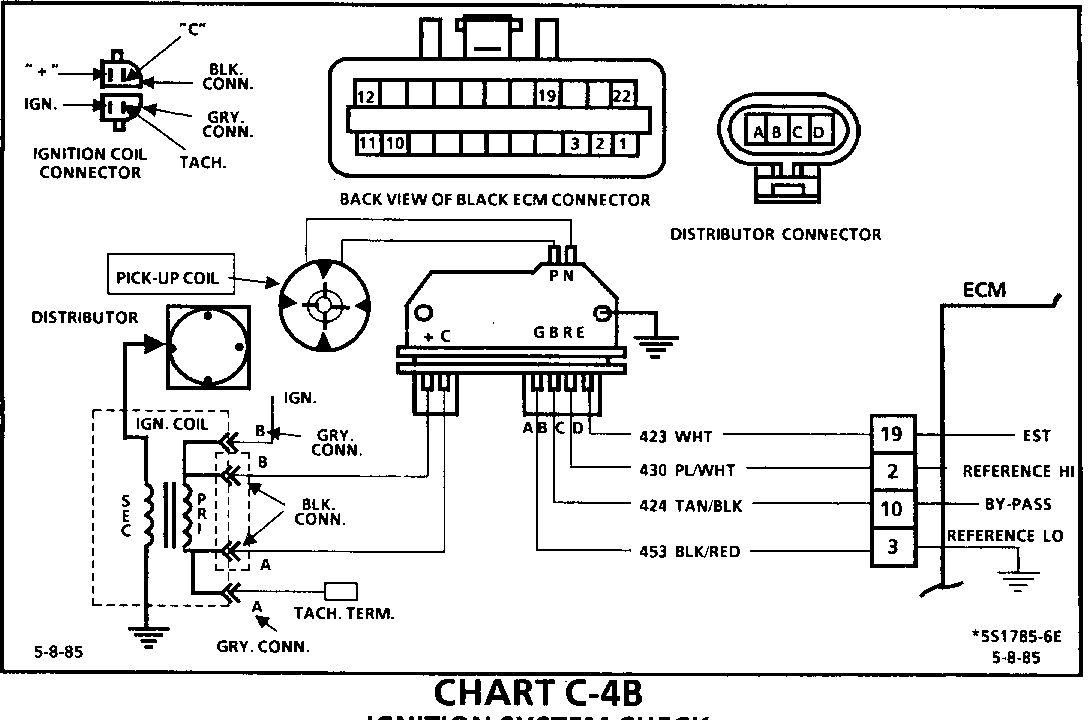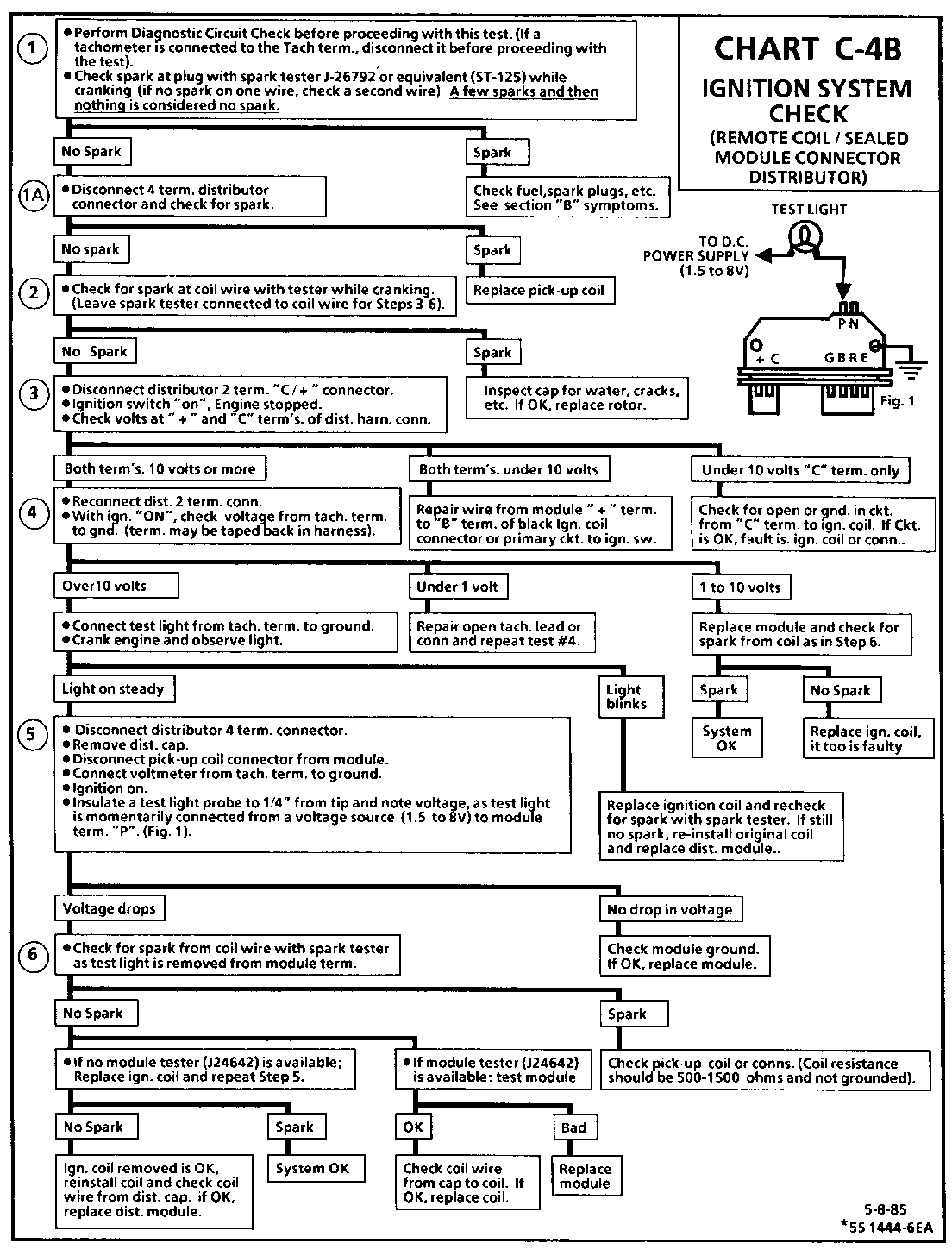IGNITION SYSTEM DIAGNOSTIC REVISION

Models Affected: 1985 Centurys, Skylarks and Somersets Equipped with A 2.5L TBI Engine (Vin Codes R and U)
Certain diagnostic charts have been revised for 1985 Centurys, Skylarks and Somersets equipped with a 2.5L TBI engine (VIN Codes R and U).
Please update pages 6D-24D and 6D-24G of your 1985 Buick Chassis Service Manual with this revised information.
IGNITION SYSTEM CHECK (REMOTE COIL/SEALED MODULE CONNECTOR DISTRIBUTOR) 2.5L THROTTLE BODY FUEL INJECTION
1. Two wires are checked, to ensure that an open is not present in a spark plug wire.
IA.If spark occurs with 4 terminal distributor connector disconnected, pick-up coil output is too low for EST operation.
2. A spark indicates the problem must be the distributor cap or rotor.
3. Normally, there should be battery voltage at the "C" and "+" terminals. Low voltage would indicate an open or a high resistance circuit from the distributor to the coil or ignition switch. If "C" term. voltage was low, but "+" term. voltage is 10 volts or more, circuit from "C" term. to Ign. coil or ignition coil primary winding is open.
4. Checks for a shorted module or grounded circuit from the ignition coil to the module. The distributor module should be turned "OFF", so normal voltage should be about 12 volts.
If the module is turned "ON", the voltage would be low, but above 1 volt. This could cause the ignition coil to fail from excessive heat.
With an open ignition coil primary winding, a small amount of voltage will leak through the module from the "Bat." to the tach terminal.
5. Applying a voltage (1.5 to 8V) to module terminal "P" should turn the module "ON" and the tach. term. voltage should drop to about 7-9 volts. This test will determine whether the module or coil is faulty or if the pick-up coil is not generating the proper signal to turn the module "ON". This test can be performed by using a DC battery with a rating of 1.5 to 8 volts. The use of the test light is mainly to allow the "P" terminal to be probed more easily.
Some digital multi-meters can also be used to trigger the module by selecting ohms, usually the diode position. In this position the meter may have a voltage across it's terminals which can be used to trigger the module. The voltage in the ohm's position can be checked by using a second meter or by checking the manufacture's specification of the tool being used.
6. This should turn "OFF" the module and cause a spark. If no spark occurs, the fault is most likely in the ignition coil because most module problems would have been found before this point in the procedure. A module tester (J24642) could determine which is at fault.


General Motors bulletins are intended for use by professional technicians, not a "do-it-yourselfer". They are written to inform those technicians of conditions that may occur on some vehicles, or to provide information that could assist in the proper service of a vehicle. Properly trained technicians have the equipment, tools, safety instructions and know-how to do a job properly and safely. If a condition is described, do not assume that the bulletin applies to your vehicle, or that your vehicle will have that condition. See a General Motors dealer servicing your brand of General Motors vehicle for information on whether your vehicle may benefit from the information.
